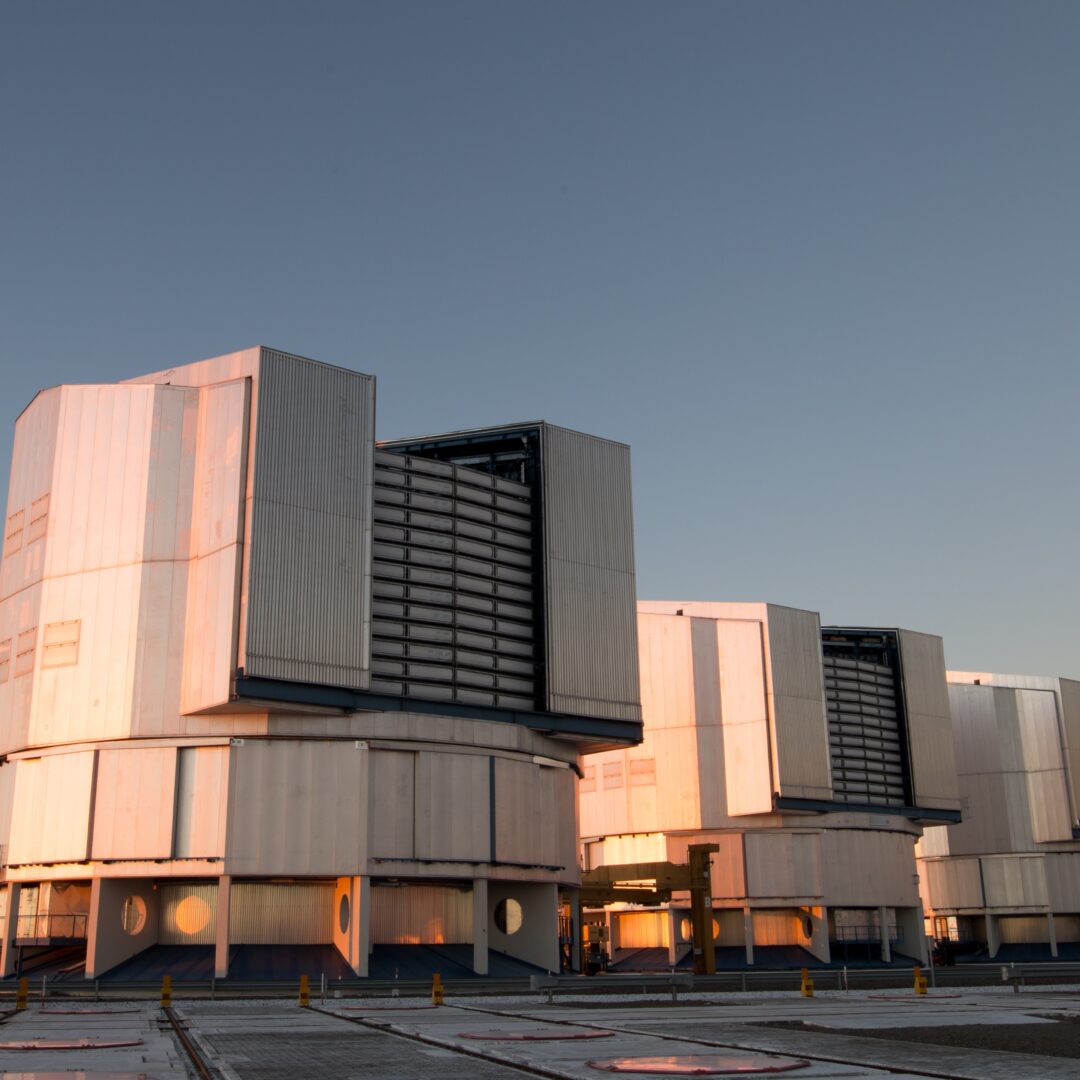Scientific infrastructureESO
Even though the permanently lit skies of our cities have made a glimpse of the night sky rare, we have never had a better view of the stars. Thanks to modern astronomical devices, we can see space more clearly and in more colours than ever before.
But quality comes at a price. Modern telescopes are beyond the reach of any one country or institution. The stargazing of today is based on intense collaboration across teams, countries and continents. A perfect example of cooperation is the European Southern Observatory (ESO). It allows astronomers from 16 member and two other cooperating countries to use the best equipment in the world in the best places in the world.
Goals, Focus, Potential
ESO was founded 60 years ago, in 1952, and has a history of success and unique discoveries. ESO teams have been involved in, for example, capturing the first image of a black hole (Nobel Prize 2020), or obtaining evidence that our Universe is expanding and, therefore, facing a chilling end (Nobel Prize 2011).
Although only Western European countries were initially ESO members, it has gradually expanded to include other countries, including the Czech Republic (2007). ESO allows them all to use state-of-the-art equipment and devices and collaborate with the world’s top astronomers. But ESO is not just for scientists: photographers, graphic designers, and nerds alike can find opportunities, internships or even jobs here. The ESO observatories also showcase the precise and technology-intensive products of the European industry, including that in the Czech Republic.
The ESO headquarters is in Garching near Munich, but its main operations are elsewhere. From the beginning, the organisation aimed to use the best possible locations for astronomical observations – and these are not to be found in Central Europe.
ESO, therefore, operates facilities in some of the world’s most inhospitable locations that provide excellent conditions for astronomical observations. High altitude, for example, is an advantage as the layer of atmosphere above the telescopes is weaker. A dry climate is welcome, too – the less humidity in the air, the sharper the image. Light pollution also plays an important role: the best observations can be made in places with sparse populations.
The highlands of the Atacama Desert in Chile are a key location for ESO. For example, the Paranal Observatory with the unique VLT (“Very Large Telescope”) system is located only 12 kilometres from the shores of the Pacific Ocean, at 2,600 meters above the sea level in one of the driest deserts on Earth.
These places are so inhospitable that even astronomers do not stay long – they manage the telescopes remotely. For example, Czech astronomers operate two telescopes directly from their local sites at another ESO observatory in La Silla, Chile.
The first one, DK154, is designed to primarily observe asteroids in our solar system. As we know the fate of the dinosaurs asteroids must be of great interest to us. Czech experts from the Astronomical Institute of the Academy of Sciences are among the leaders in the research.
The second Czech-operated telescope, E152, will help with the hunt of contemporary astronomy: the search for a second Earth. It has returned from a long rest for this, as it had been completely inactive for the past 20 years until it was revived by successful collaborations between Czech astronomers and industry, specifically the ProjectSoft HK. The company specialise in precise robotization of astronomical telescopes.
ESO will strengthen its position in contemporary astronomy in the coming years thanks to the world’s largest telescope – the Extremely Large Telescope (ELT). The facility, currently under construction, will have a main mirror diameter of a whopping 39.3 metres. The world’s largest single telescope today, the Gran Telescopio Canarias, has a mirror diameter of 10.4 metres.
The search for other exoplanets, including those of a similar size to Earth, will also be a big challenge for the new telescope. It is not certain if it will be successful and we may still have to wait for other missions and devices to find the second Earth. Finding a planet suitable for life is not easy – and that is one of the most valuable lessons of astronomy; we must cherish our place to live, as there is no other like it near nor far.
The European Door to Space
Space technology is an everyday part of life on Earth today, and so the European institutions are dedicated to its exploration and exploitation. The international governmental organisation ESA is a key player, ensuring and coordinating cooperation between its members. Among other things, it is largely responsible for the operation of the European spaceport near Kourou in French Guiana. The EUSPA also plays an important role in promoting the commercial exploitation of data and services from the European Galileo navigation programmes.
Key Words
astronomy, optics, light, photon, universe, technology
